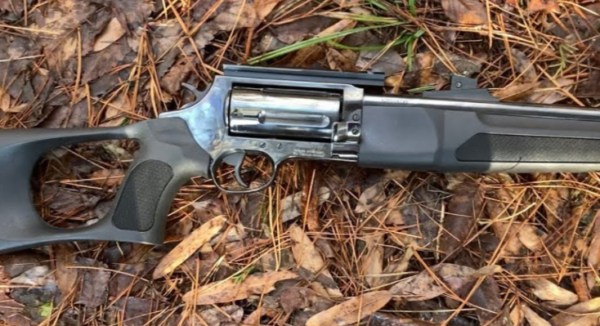in this article we will talk about our Cva Wolf problems Yet, like any consequence, it’s not without its share of problems.
This blog aims to provide a comprehensive guide addressing common issues faced by CVA Wolf users and their respective fixes.

Cva Wolf Problems
The CVA Wolf Muzzleloader, despite its popularity, can experience certain issues. Users have reported problems with its breech plug design, making it difficult to clean and maintain.
Also, its stock scope has shown to be less resilient to heavy recoil, requiring frequent re-sighting.
1. Ignition Failure


Ignition failure is a common problem experienced by CVA Wolf users. This happens when the powder charge does not ignite, rendering the muzzleloader ineffective.
Users typically encounter this problem due to improper maintenance, poor quality primers, or damp powder.
Solution
To rectify an ignition failure, start by thoroughly cleaning the firearm, ensuring clear pathways for the primer’s spark.
Always use high-quality primers for reliable ignition and store your powder in a dry, cool place to prevent it from becoming damp.
2. Breech Plug Issues


Breech plug issues are another set of difficulties often faced by CVA Wolf users. The breech plug is a crucial component of the muzzleloader; it contains the primer that ignites the powder charge.
Problems arise when the breech plug gets clogged or corroded, which can impede the firearm’s performance and safety.
Solution
To resolve breech plug issues, perform regular cleaning and maintenance.
Ensure you thoroughly clean the breech plug after each shooting session to remove any residue or buildup.
If corrosion is extensive, consider replacing the breech plug entirely.
3. Difficulty in Loading
Difficulty in loading is a problem that some CVA Wolf users may encounter.
It typically results from a buildup of residue in the barrel after repeated firings, which can make it more challenging to push the bullet down.
The issue could also stem from using improperly sized bullets or sabots, which do not fit the gun’s barrel correctly.
Solution
Overcoming loading issues primarily involves regular and thorough cleaning of the barrel to remove any residual buildup.
Utilize a cleaning rod and the appropriate brushes designed for your CVA Wolf’s caliber.
Always ensure you are using bullets or sabots that match the specifications of your gun.
4. Misfires
Misfires are a serious concern for CVA Wolf users, potentially leading to hazardous situations.
A misfire occurs when the trigger is pulled, but the gun fails to fire, even though the primer has been struck.
This could be due to a variety of reasons such as a faulty firing pin, a blocked or fouled barrel, or even the use of old or degraded powder and primers.
Solution
To mitigate the risk of misfires, maintain regular cleaning and inspection of your firearm.
Pay particular attention to the firing pin, ensuring it is not damaged or worn out. If it is, replace it immediately.
Always check the barrel for any obstructions or excessive fouling before loading and firing.
5. Inaccurate Shots
Inaccurate shots are a common issue faced by CVA Wolf users.
This can often be due to an array of factors such as improper gun maintenance, incorrect bullet or sabot size, misalignment of the sights, or even inadequate shooting technique.
Solution
Addressing the issue of inaccurate shots first involves a thorough inspection of your firearm.
Double-check that you’re using the correct size of bullets or sabots as recommended by the manufacturer.
If the sight alignment is off, consider having your firearm professionally serviced or adjusted.
6. Ramrod Breakage
Ramrod breakage is another issue that CVA Wolf users might run into.
The ramrod is an essential tool used in loading the muzzleloader, and its breakage can severely hinder the loading process.
Typically, this occurs due to excessive force used during loading or the use of a ramrod made from low-quality materials.
Solution
To address ramrod breakage, start by being gentle and careful when loading the muzzleloader. Excessive force is often unnecessary and can lead to breakage.
Furthermore, consider investing in a high-quality ramrod with more durability.
If a ramrod breaks, replace it immediately to ensure the safe and effective operation of your CVA Wolf.
7. Stock Cracking
Stock cracking is a significant concern for CVA Wolf users.
Cracks often occur due to harsh environmental conditions, impact, or improper handling and can grow over time if not addressed promptly.
Solution
To prevent and rectify stock cracking, maintain proper firearm handling and storage practices.
Avoid exposing your CVA Wolf to extreme temperatures or moisture, as these can cause the stock material to expand, contract, and eventually crack.
Regularly inspect the stock for small cracks and get them repaired by a professional before they widen.
For severe cracks, consider replacing the stock entirely to preserve the firearm’s integrity and safety.
8. Improper Sealing
Improper sealing is a concern that can occur for users of the CVA Wolf.
This issue usually happens when the breech plug does not seal correctly, potentially leading to a loss of pressure when the firearm is fired, which can result in reduced velocity and accuracy.
In some cases, it can also cause gas leakage, posing a safety risk.
Solution
To tackle the issue of improper sealing, it’s crucial to regularly inspect the breech plug and its threads for any signs of damage or excessive wear.
If any are found, consider replacing the breech plug with a new one.
Also, make sure to clean the breech plug and its threads regularly to ensure a proper seal.
9. Corrosion and Rusting
Corrosion and rusting are common issues that can plague CVA Wolf firearms.
These problems usually stem from constant exposure to moisture and lack of proper maintenance.
Corrosion can seriously degrade the quality of the metal parts of the firearm, impairing its functionality and potentially posing a safety risk.
Solution
To prevent and address corrosion and rusting, regular cleaning and oiling of the firearm is essential.
Use a rust-preventive oil on all metal parts of the firearm, ensuring it’s coated but not overly saturated. Store the firearm in a dry, cool place and avoid exposing it to humid conditions.
If rust or corrosion is already present, consider using a specialized rust remover or seek professional help to ensure the firearm is safely restored to its optimal condition.
10. Difficulty in Cleaning
Difficulty in cleaning is a common problem encountered by CVA Wolf users.
Over time, the powder residue can accumulate in the nooks and crannies of the firearm, making it difficult to clean thoroughly.
Poor cleaning techniques or inappropriate cleaning tools can further compound this problem, potentially impacting the performance and lifespan of your firearm.
Solution
Addressing the difficulty in cleaning involves using the correct cleaning tools and techniques.
A high-quality cleaning kit designed for muzzleloaders should have all the essential tools needed for a thorough clean.
Be sure to follow the manufacturer’s instructions regarding cleaning and maintenance.
11. Faulty Sights
Faulty sights are a common issue faced by users of the CVA Wolf. Sights play a crucial role in achieving accurate aiming and shooting.
If the sights are off, it can significantly affect the accuracy of your shots.
This problem can occur due to wear and tear over time, physical impacts, or manufacturing defects.
Solution
Addressing faulty sights involves first determining the source of the problem. Regularly inspect your sights for any physical damages or signs of wear.
If the sights are misaligned, you may need to adjust them according to the manufacturer’s instructions or have them professionally realigned.
12. Trigger Issues
Trigger issues are a common problem experienced by CVA Wolf users.
These can range from a trigger that is too loose or too tight, to one that fails to respond when pulled.
Such inconsistencies can significantly hamper the accuracy and safety of your shots and may be due to wear and tear, poor maintenance, or a manufacturing defect.
Solution
The solution to trigger issues first involves diagnosing the specific problem.
If the trigger is too loose or too tight, it can often be adjusted according to the manufacturer’s instructions or by a professional.
If the trigger fails to respond altogether, it’s essential to seek professional help immediately as this poses a significant safety risk.
Conclusion
In conclusion, owning and maintaining a CVA Wolf firearm comes with its set of challenges.
Issues like improper sealing, corrosion, difficulty in cleaning, faulty sights, and trigger problems can all impact the performance and lifespan of your firearm.
However, with regular maintenance, a proper understanding of the firearm’s components, and prompt action when issues arise, many of these problems can be mitigated.
FAQs
What is the best load for a CVA wolf?
The best load for a CVA Wolf is typically around 100 grains of Blackhorn 209 powder with a 250-grain bullet.
What is a CVA wolf?
The CVA Wolf is a muzzleloader rifle widely known for its quick-release breech plug and break-action design.
Can you use loose powder in a CVA Wolf?
Yes, you can use loose powder in a CVA Wolf; it’s designed to work well with both pelletized and loose powder.


Biographical Info: Waseem1001, Owner of My Guns Geek
Name: Waseem1001
Email: wwwfffwww117@gmail.com
Mailing Address: Cooker Insider, 4773 Sigley Road, White Cloud, KS 66094
About Waseem1001
Welcome to My Guns Geek, your gateway to the world of firearms and everything related. Meet the person who is passionate about firearms, gear, and the responsible ownership of guns. Waseem1001, the owner of My Guns Geek, is here to provide you with a wealth of information and insights.
A Lifelong Fascination
Waseem1001’s fascination with firearms and outdoor gear began at an early age. Whether it was admiring the craftsmanship of firearms or exploring the utility of outdoor equipment, the world of guns and gear always held a special place in his heart. This deep-rooted passion eventually led to the creation of My Guns Geek.
Our Mission
At My Guns Geek, our mission is to empower gun enthusiasts and outdoor enthusiasts with accurate and comprehensive knowledge.
Waseem1001 values your feedback, questions, and suggestions. Your engagement and contributions are vital in shaping the future of My Guns Geek.
Thank you for being a part of the My Guns Geek community, and Waseem1001 looks forward to sharing this exciting journey with you.


